Letters from Lodi
An insightful and objective look at viticulture and winemaking from the Lodi
Appellation and the growers and vintners behind these crafts. Told from the
perspective of multi-award winning wine journalist, Randy Caparoso.
All about the Christmassy colors of summer grapes
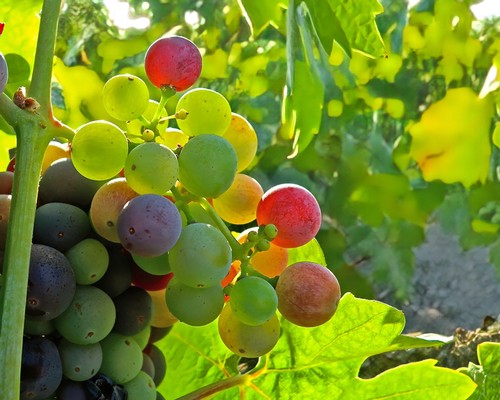
Mokelumne River-Lodi appellation Zinfandel during in mid-July, just beginning veraison.
The objective of Vitis vinifera, or grapevines, from their very beginning⏤speculated as dating back over a million years ago, based upon evidence of fossilized leaves and seeds⏤has always been the same as that of humankind: To bear fruit and multiply.
In the Northern Hemisphere, this basic objective becomes visible during the months of July and August. It is called veraison, or véraison in the original French, for when the colors of black skinned grapes turn from green to red, violet, blue and blackish colors. Colors so bright, grapevines almost look like they are decked out in Christmas bulbs.
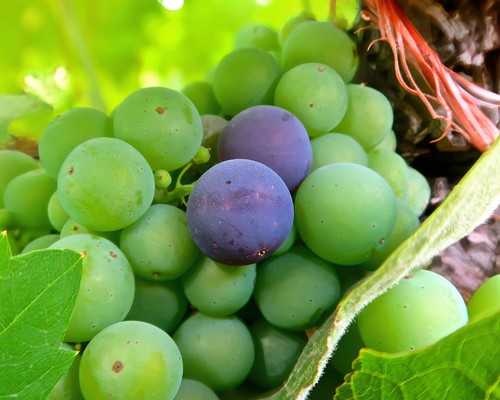
First sign of veraison among old vine Zinfandel in the beginning of July.
The change in skin colors are indicative of individual berries in grape clusters undergoing a phase of berry cell division and cell expansion. When in their green phase, when skins are still filled with chlorophyll, berries are in the process of growing into their maximum size, while their organic acid content is at its highest. You can say that grapevines, while still bearing green berries, is in its mama-bear mode⏤protective of its tender seeds, the plant's original means of propagation, as it builds a tough, acidic wall of pulp around them, keeping the fruit unedible to hungry animals.

Ancient vine (over 100 years old) Mokelumne River-Lodi Mission grapes during veraison.
Then suddenly, by the end of July for most grape varieties, something in grapevines clicks. Mama bear decides her seeds are nearly ripe enough for dispersal. The berries' chlorophyll content enters a period of degradation, and voilà, veraison.
As the multi-colored stage of veraison unfolds, grapes soften and sugars begin to accumulate, while acids steadily decline and cell division grinds to a halt. It is as if the plant has suddenly decided that it needs to begin to make itself more attractive to possible suitors. The fruit transitions from green, herby, sour tastes to, eventually, an appealingly sweet, aromatic, luscious fruitiness.
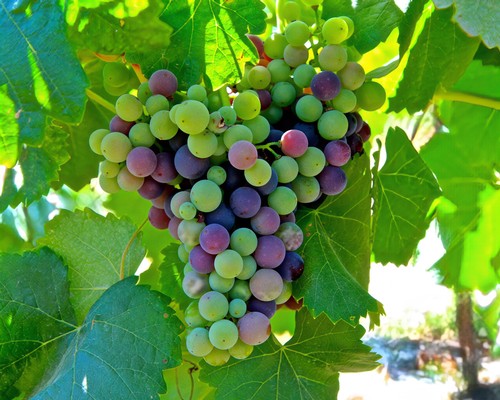
Lodi Alicante Bouschet at the end of July, just beginning veraison.
The softening skins of black skinned grapes begin to develop more flavonoid phenolics, adding to the fruit's edibility, and it is precisely these phenolics that account for most of the aromas, flavors and sensory textures eventually expressed in a fermented red wine.
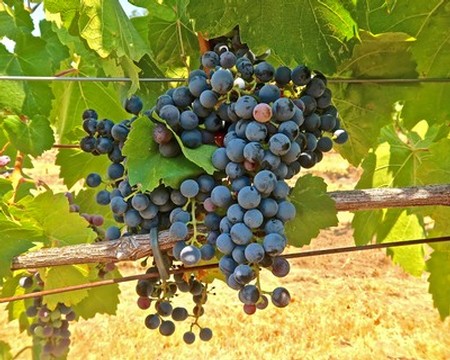
Lodi-grown Blaufränkisch towards the end of July, almost completed veraison.
In short, the grapes are suddenly saying, “take me!” In the wild, birds, deer, bears, and other animals would be there to pounce, the moment grapes reach a threshold where the taste of sweet fruitiness predominates over acidic sharpness.

Sangiovese in Lodi's River's Edge Vineyard undergoing veraison towards the end of July.
In the natural course of things, mature seeds would be excreted through animal waste, spread hither and yon where new vines can pop up. This is how varieties of Vitis managed to endure, and evolve, through hundreds of thousands of years, even through ages when the earth was buried mostly under ice.
Today, in cultivated vineyards located alongside natural corridors, measures such as nets, fences and raptors are utilized to discourage the illicit munching of wild animals.

Old vine Zinfandel in Lodi's Manassero Vineyard during veraison.
When winegrowing became an industry, as long as 8,000 to 9,000 years ago (see our post, The 9,000-year history of Vitis vinifera), enterprising vintners soon learned that it is best to wait a good 30 to 45 days after black skinned wine grapes go through veraison to give clusters more time to develop optimal flavors; a window that usually arrives in August, September or October (in the Southern Hemisphere, it's February, March or April). This is when sugar content climbs closer to 20% to 25% of grape volume⏤a percentage that translates into wines of 12% to 15% alcohol.
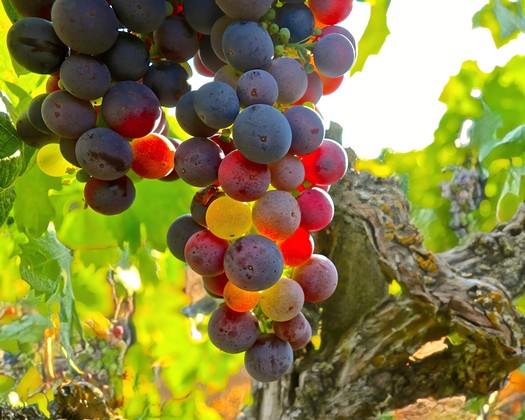
Christmasy colors of veraison among old vine Zinfandel in Lodi's Wegat Vineyard.
During its evolution over millenniums, Vitis vinifera eventually mutated from dioecious (divided between male and female plants) to hermaphrodite (i.e., self-pollinating) identities: A characteristic that would become highly advantageous to the earliest grape growers, once they discovered that the natural yeast flora found on grape skins miraculously produce a delicious alcoholic beverage (wine!) when put in contact with grape sugars.
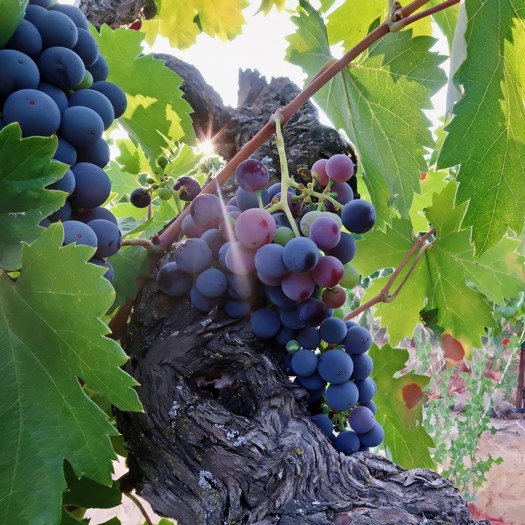
Ancient vine Mokelumne River-Lodi Zinfandel cluster at the end of July, with veraison nearly finished.
Unlike the way wild dioecious grape vines went forth and multiplied, it became possible to establish generations of self-pollinating vines when propagated from cuttings; thus assuring more predictable consistency of fruit and wine types, once favorable cultivars (i.e., grape varieties) became identified.

Bokisch Vineyards' Garnacha (a Spanish clone of Grenache) during July veraison.
Meanwhile, those of us who live in wine regions north of the equator can still enjoy the beautiful sights of veraison in the middle of summer. It is like the visually stimulating start of a wine lover’s Christmas⏤we can hardly wait to unwrap the pleasures to come!
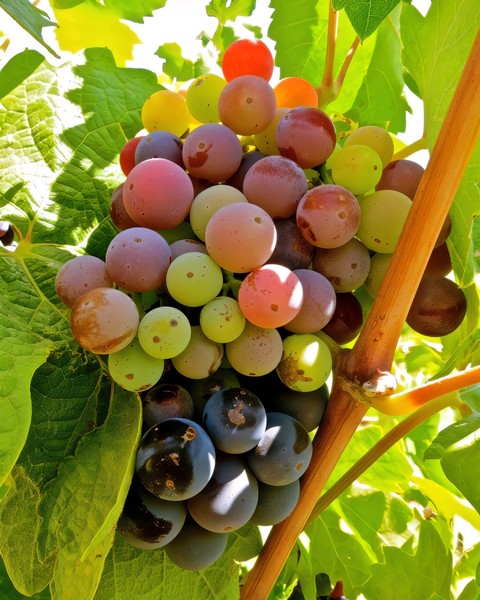
Ancient vine Lodi Zinfandel in the middle of July veraison.